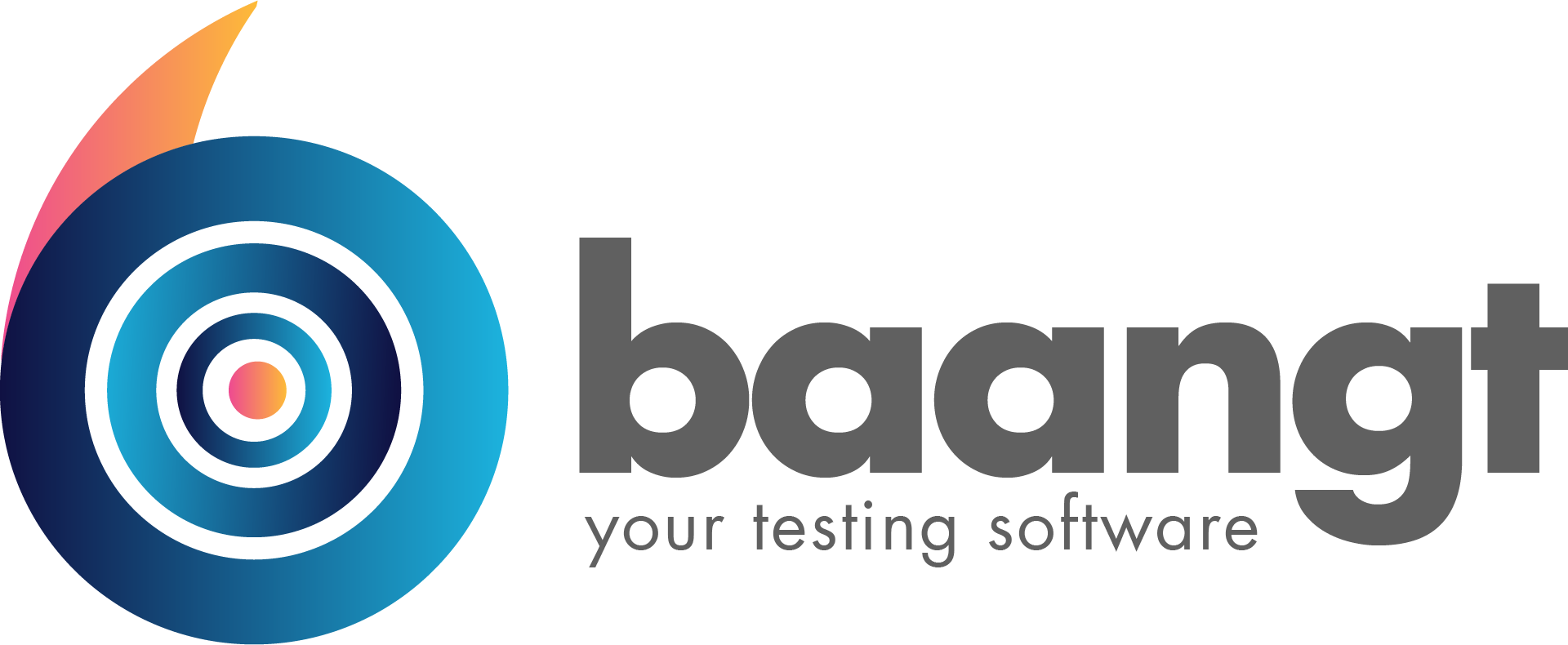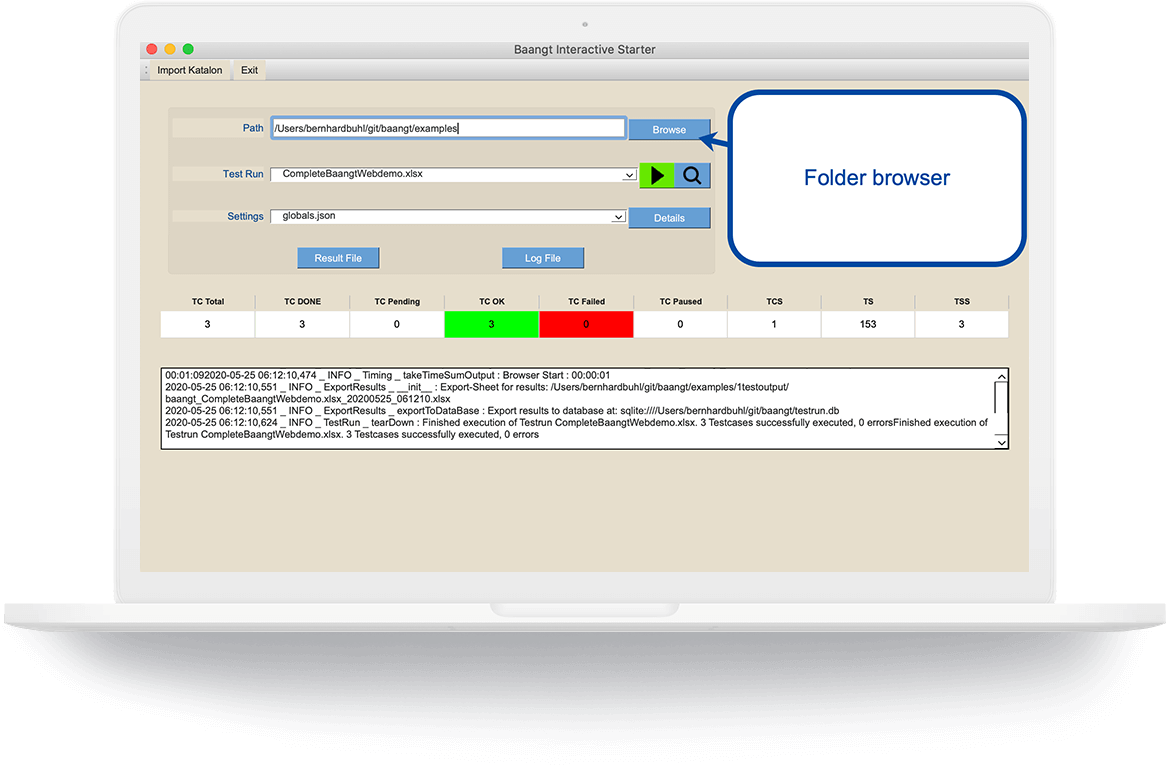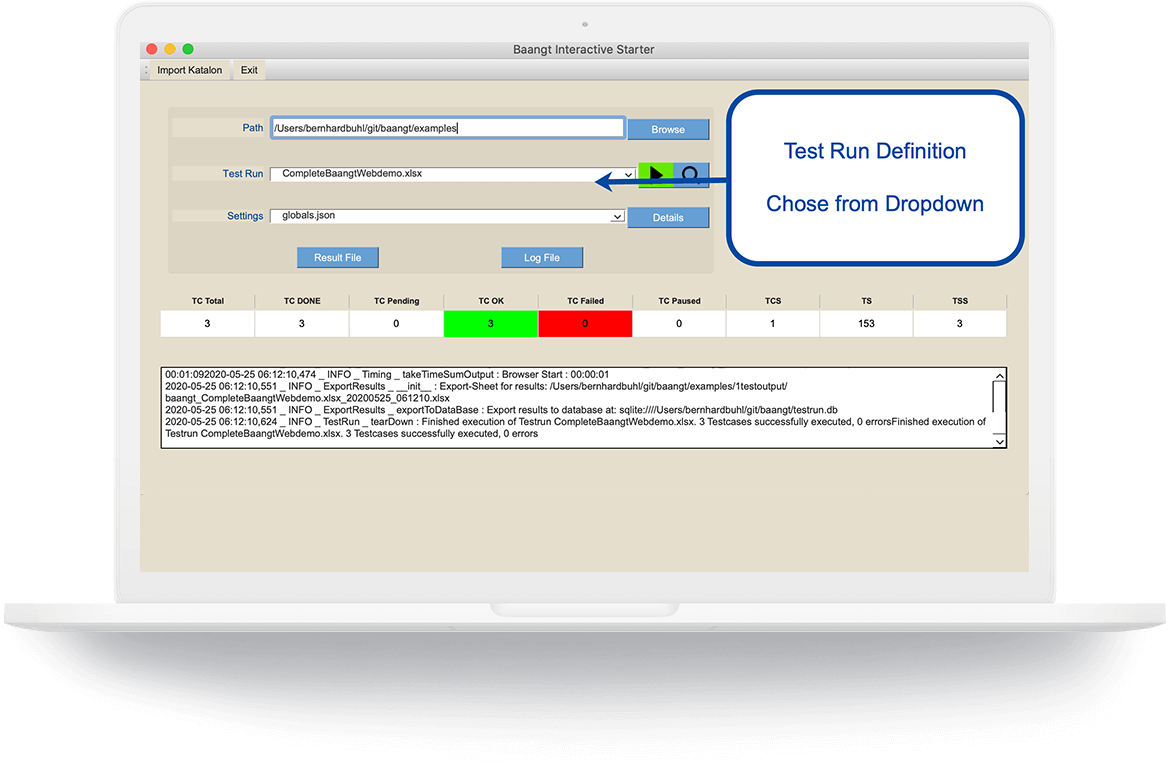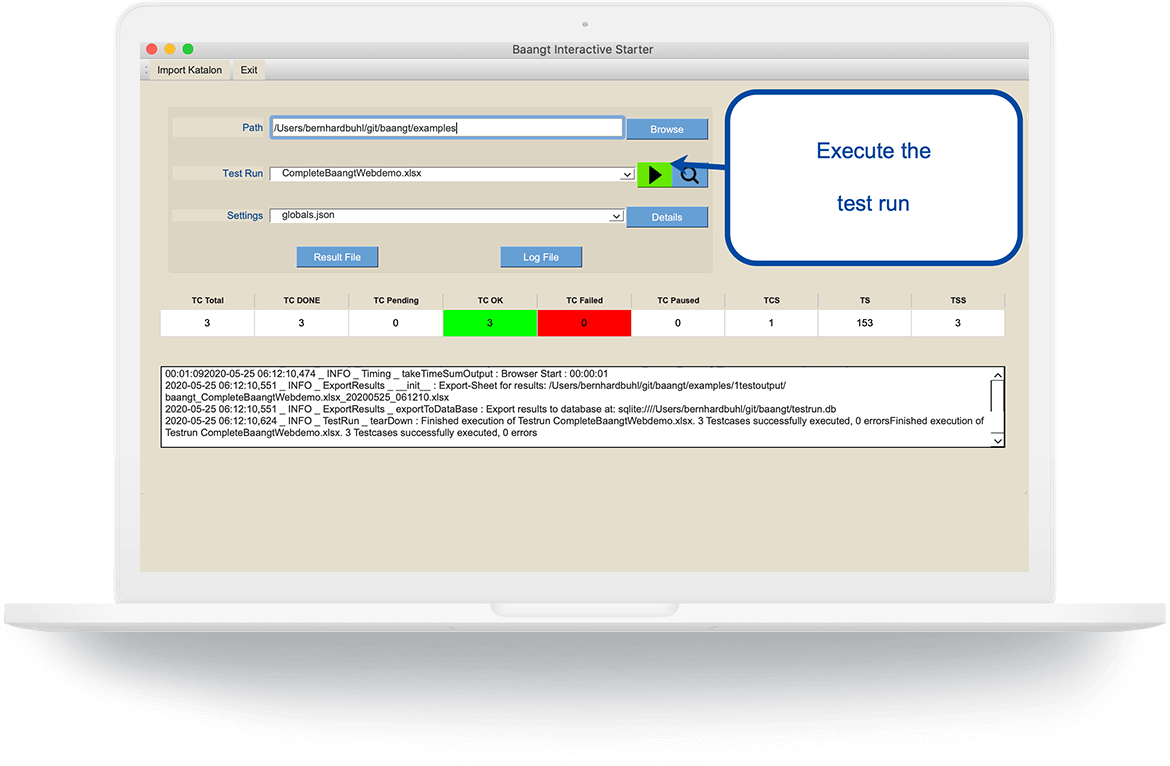Flexible Test Automation Suite software that grows with you
From simple recoding based automation to highly complex corporate environments: baangt is the solution
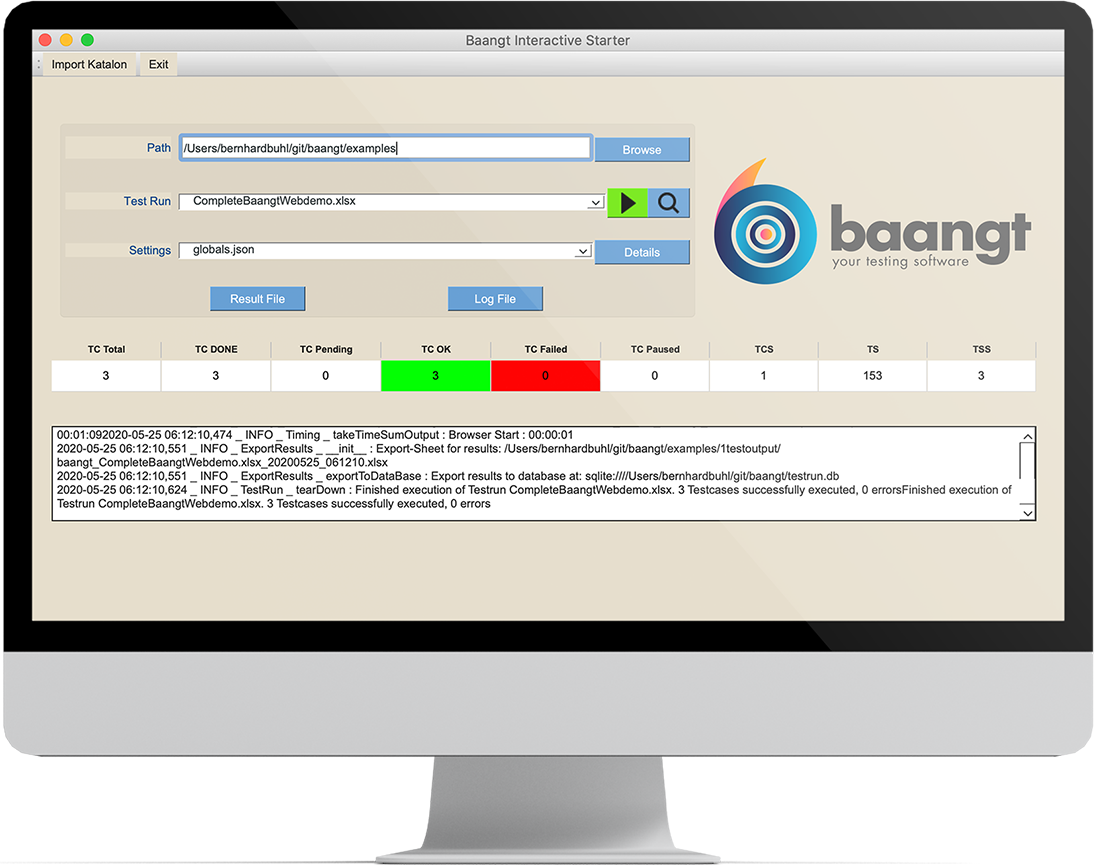




One Platform, Many Superpowers
With baangt you have one flexible open source test automation suite software solution for all your test stages and needs. You’ll use one tool-set, one database per stage and one reporting to see at any given moment, how your stages and applications are doing, and if it’s safe to release the current state of one stage to the next.
Productivity
Our platform is optimized to be super easy to start, and flexible when your demand grows.
Intuitive
Human centered design makes it easy for end users to run all types of tests
Easy software test automation
Run all of your tests from a single interface: manual and automated. Trace it all by managing requirements and test cases with full traceability. baangt is powerful, straightforward and flexible Test Automation Suite, and you can get started in less than 5 minutes.
Fast & Easy Work
Super fast and easy even for end users, though it comes packed with all features of the higher end solutions
Create Results
Streamline test processes and support project organizations to deliver better results in shorter time
Great for developers
baangt test automation is already pretty versatile, but from time to time you’ll face a requirement that simply can’t be done without writing code. But that’s not a bad thing – we have prepared a guideline to help you
from baangt.base.BrowserDriver import BrowserHandling
class MyCustomBrowser(BrowserHandling)
def findByAndClick(…)
# Search for the element
self.customSearchAndReact()
def customSearchAndReact():
if self.findBy(xpath, “specialThingForThisClient”):
self.testdataDict[GC.TESTCASESTATUS] = GC.TESTCASESTATUS_FAILED
Types of Tests
With baangt Test Automation Suite, It doesn’t matter if your organization is agile or waterfall oriented or it follows one of the many hybrid variants. We have several types of test automation to run in your company independently of its size.
Increment testing
Instead of testing hundreds of cases manually, you’ll need only one recording and the prepared dataset
Performance testing
Heartbeat and Alive-Testing
Alive-tests with some APIs could run for instance every 5 minutes. Heartbeat tests are a smaller subset of regression tests
Regression testing
End to End (E2E) Testing
baangt follows a structure of Test Case Sequences where you combine multiple single Test cases
Cradle to the grave
Time travel tests
Lifecycle of business objects
Complex tests with objects that follow a certain (long) life cycle. The life cycle can go over years or decades
Built on the Shoulders of Giants
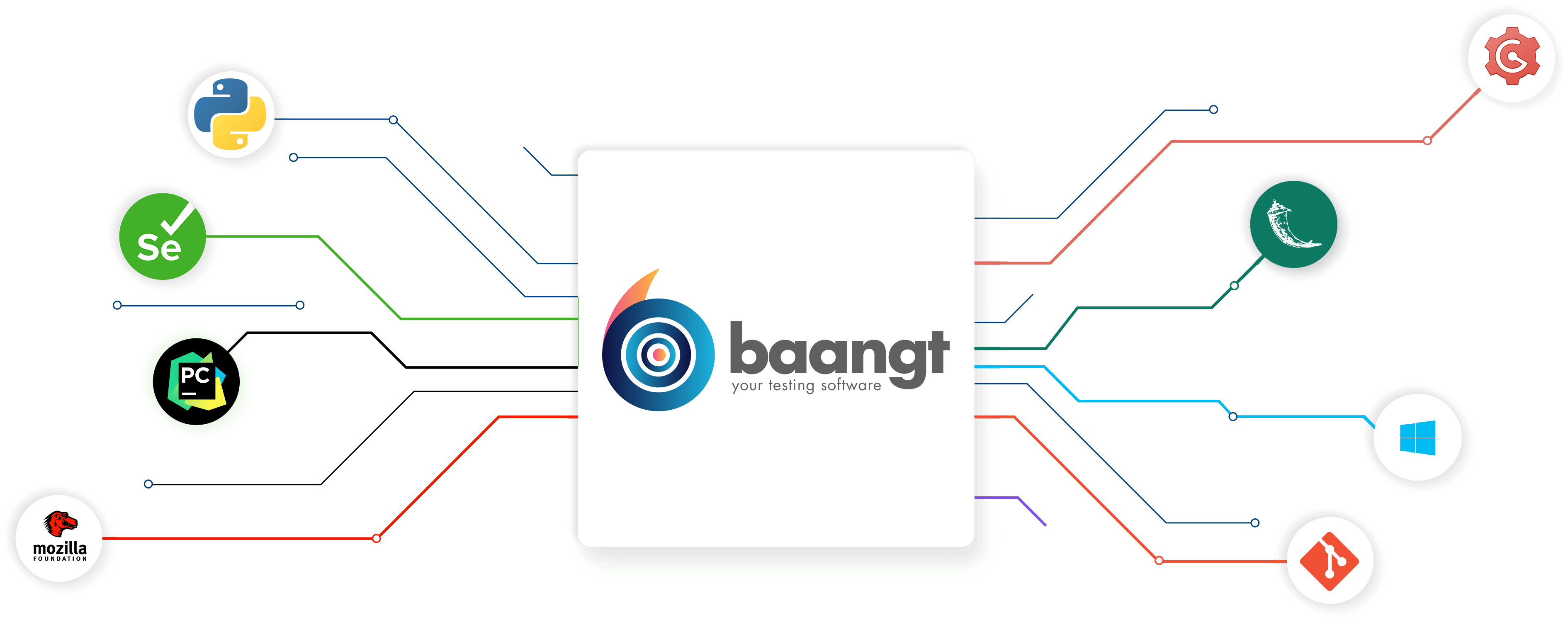
Have questions? Here are some FAQs to help you
How to install?
Install from sources:
Install sources from GIT (Please adjust to your virtual environment as per your preferences
git clone https://gogs.earthsquad.global/athos/baangt
cd baangt
pip3 install -r requirements.txt
python3 baangtIA.py
Docker
Install from GIT:
git clone https://gogs.earthsquad.global/athos/baangt-Docker
cd baangt-Docker
Make build
Make run
then use your preferred VNC-Client with vnc://localhost:5902. Unless you changed the default password, the password is password .
Install PIP-Package
If you’re planning to implement subclassing you can also use the pip package:
pip install baangt
How baangt was built?
Building baangt from the scratch would take years and cost millions. That it exists and that it works so versatile is due to other great, dedicated people who supplied the building blocks. Of course there’s too many to mention but here’s a list of the most valuable components of baangt
- Python3
-Flask
-PySimpleGui (again on the shoulders -of giants like QT4/5 and Tkinter)
-Requests-Module
-BeautfiulSoup - Selenium
- Mozilla Foundation (geckodriver, firefox)
- PyCharm by JetBrains
- Gogs GIT-Server
How do I make custom enhancements?
Baangt is already pretty versatile but from time to time you’ll face a requirement, that simply can’t be done without writing code. But that’s not a bad thing – we like writing code after all, don’t we?
You can find all you need about Subclassing, Debugging and Plugins on our documentation
Can I create plugins on baangt?
You can, first make yourself familiar with our documentation in order to implement Plugins.
How can I contribute?
There is a few ways you can contribuite
Documentation
The documentation of baangt is written in RST-Format and part of the standard repository. The compiled documentation from Sphinx is in the same repository in the branch gh-pages.
- Make sure you have the latest version checked out in GIT
- Create a branch with your name
- Create a pull request
Bugfixing
If you found a bug and want to fix it, please describe the bug in the issue tracker and create a branch with the bug number. Then create a Pull request.
New features
Before you fork please get in contact and let’s discuss, if the new feature you have in mind should go into baangt standard functionality.
I found a bug, what do I do now?
Why open source?
What are the prerequisites to get started?
Firefox installed
Python3 installed
baangt installed (either via PIP or from the GIT-Repository at gogs
How many tests can I run?
As much as you can possibly handle
How much does baangt cost me?
Why not do everything in Excel?
Are there going to be new features?
We implement all features for 3 operating Systems (Mac, Windows, Debian Linux and Ubuntu on Docker).
All new features can be seen in our latest changes and planned features
